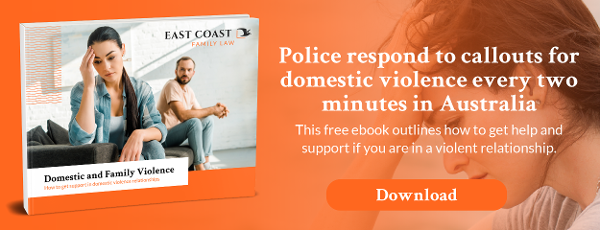How can I help a family member in a domestic violence situation?
Jun 13, 2019 2:28:35 PM
There are few things more heartbreaking than discovering a loved one is the victim of domestic violence. The root causes and damaging effects of abuse - emotional or physical - can be complicated and deep. As many people are already aware, it's not a simple matter of pointing out that they're in an abusive relationship and should leave. Here are some steps you can take.
Understand the Dynamic
One of the difficulties with helping someone in an abusive relationship is understanding what the abuser is really accomplishing and why the victim doesn't just pack up and leave. You need to understand their mindset so that your approach is not counterproductive. That's why learning about the dynamics of domestic violence is a good start - for example:
- The abuser has preyed on their insecurities - about family, support, love. They may be convinced that they are useless without the abuser, or if they have children, that breaking up the family will be most detrimental to the kids.
- They may be financially and socially dependent on their abusive partner. Abuse is, after all, about taking control away. Your loved one may have become isolated and regimented by their abuser.
- They may genuinely think that their partner will change or that the good times will outweigh the bad. The cycle of abuse includes periods where the abuser is apologetic and lovey-dovey, which psychologically reinforces this belief.
- They may be scared of what may happen if they leave because the abuser has convinced them that they will take away the kids, hurt themselves, or hurt your loved one -- or that the police won't believe them.
- They may honestly believe that the abuse is their fault because they have been convinced that it results from their behaviour, or that they deserve the abuse -- based on how their abuser has emotionally manipulated them.
Approach in an Empowering Way
How you talk about the abuse and your concerns will matter. If your family member feels judged, pressured, or disrespected, they may withdraw and distrust you. Even worse, you might be inadvertently playing into representations the abuser may have made. Tell them why you are concerned, and assure them of your support, but also make sure that:
- You validate their feelings, which will often be conflicted. Tell them that what they are feeling is normal, whether it's guilt, anger, fear, sadness, even love and hope -- or all of these emotions.
- You never blame your loved one for being or staying in a domestic violence situation, or use the discussion as a platform to scorn their abuser. Focus on cultivating their motivation to leave, their confidence, their self-worth, and their safety.
- You are patient with them. Don't pressure them, and realise that it may take time for them to finally build up the courage and commitment to leave the relationship.
- You think about safety - theirs and yours. Don't provoke or encourage them to provoke the abuser. Make a "safety plan" that includes where they can go, and any protocols that may be necessary. Of course, if there is immediate danger to them, their children, or you, call 0-0-0.
- You provide consistent, unconditional support. They need to feel they can rely on you. Be there for them -- to an extent that is healthy for you. You matter too.
- You provide as much information you can about resources that are available -- shelters, domestic/family violence counsellors, social services, child protection services, family law and child custody lawyers, as well as legal, housing, and financial assistance.
For more information, or if you have any questions, contact East Coast Law. We're here to help.
Where to get more help
Remember, you are not alone in wanting to help your family member. There are excellent resources available to help you break the cycle and help your child get their life back.
Crime Stoppers
1800 333 000
Domestic Violence Line
1800 65 64 63
1800RESPECT
To find out more about child protection services, you can also download our free domestic and family violence ebook.
Return to Blog


